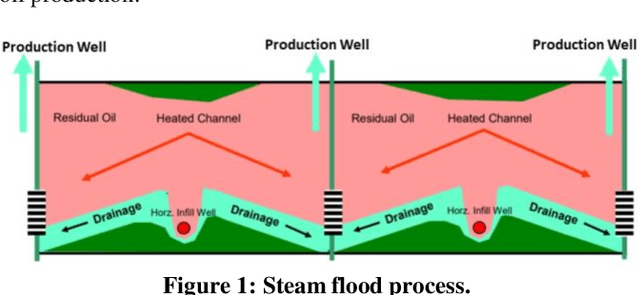Chris T. Reaume
Machine Learning and the Internet of Things Enable Steam Flood Optimization for Improved Oil Production
Aug 30, 2019



Abstract:Recently developed machine learning techniques, in association with the Internet of Things (IoT) allow for the implementation of a method of increasing oil production from heavy-oil wells. Steam flood injection, a widely used enhanced oil recovery technique, uses thermal and gravitational potential to mobilize and dilute heavy oil in situ to increase oil production. In contrast to traditional steam flood simulations based on principles of classic physics, we introduce here an approach using cutting-edge machine learning techniques that have the potential to provide a better way to describe the performance of steam flood. We propose a workflow to address a category of time-series data that can be analyzed with supervised machine learning algorithms and IoT. We demonstrate the effectiveness of the technique for forecasting oil production in steam flood scenarios. Moreover, we build an optimization system that recommends an optimal steam allocation plan, and show that it leads to a 3% improvement in oil production. We develop a minimum viable product on a cloud platform that can implement real-time data collection, transfer, and storage, as well as the training and implementation of a cloud-based machine learning model. This workflow also offers an applicable solution to other problems with similar time-series data structures, like predictive maintenance.
* Accepted by the 1st International Workshop on Artificial Intelligence of Things at KDD 2019
 Add to Chrome
Add to Chrome Add to Firefox
Add to Firefox Add to Edge
Add to Edge